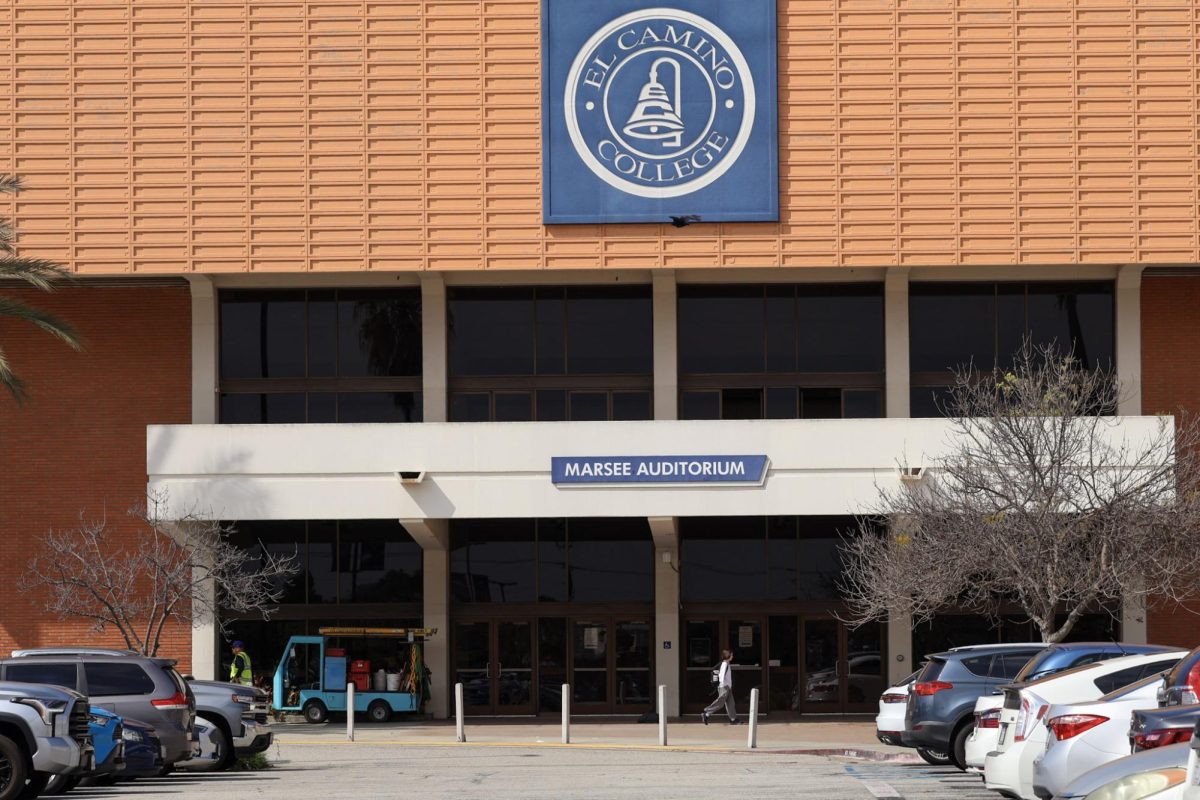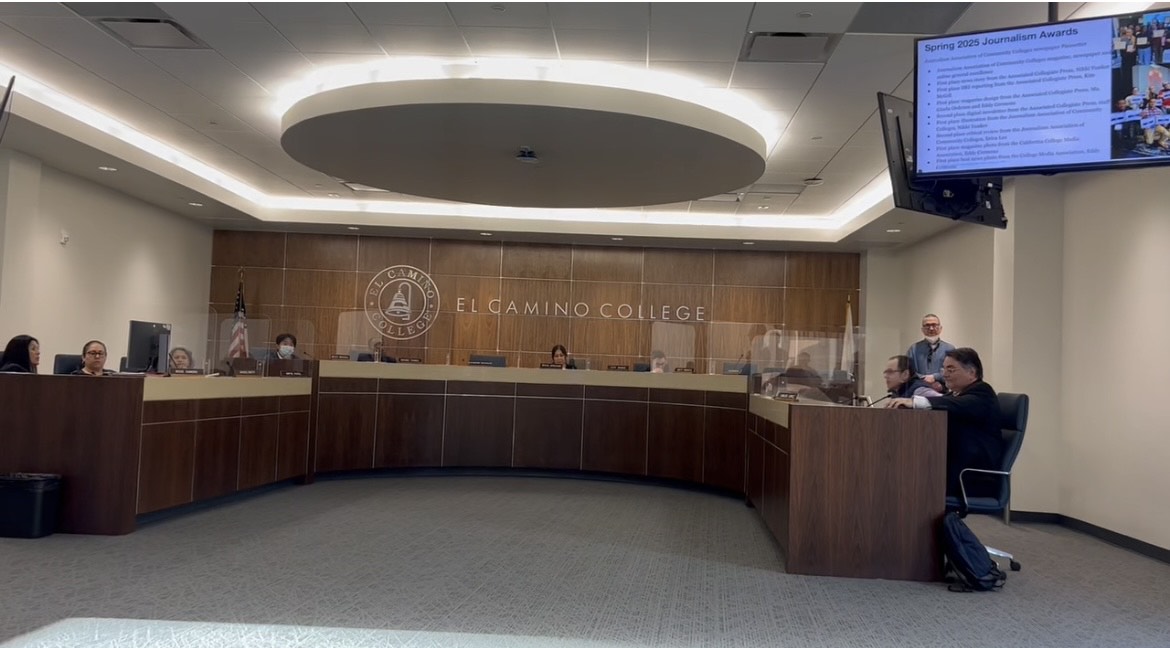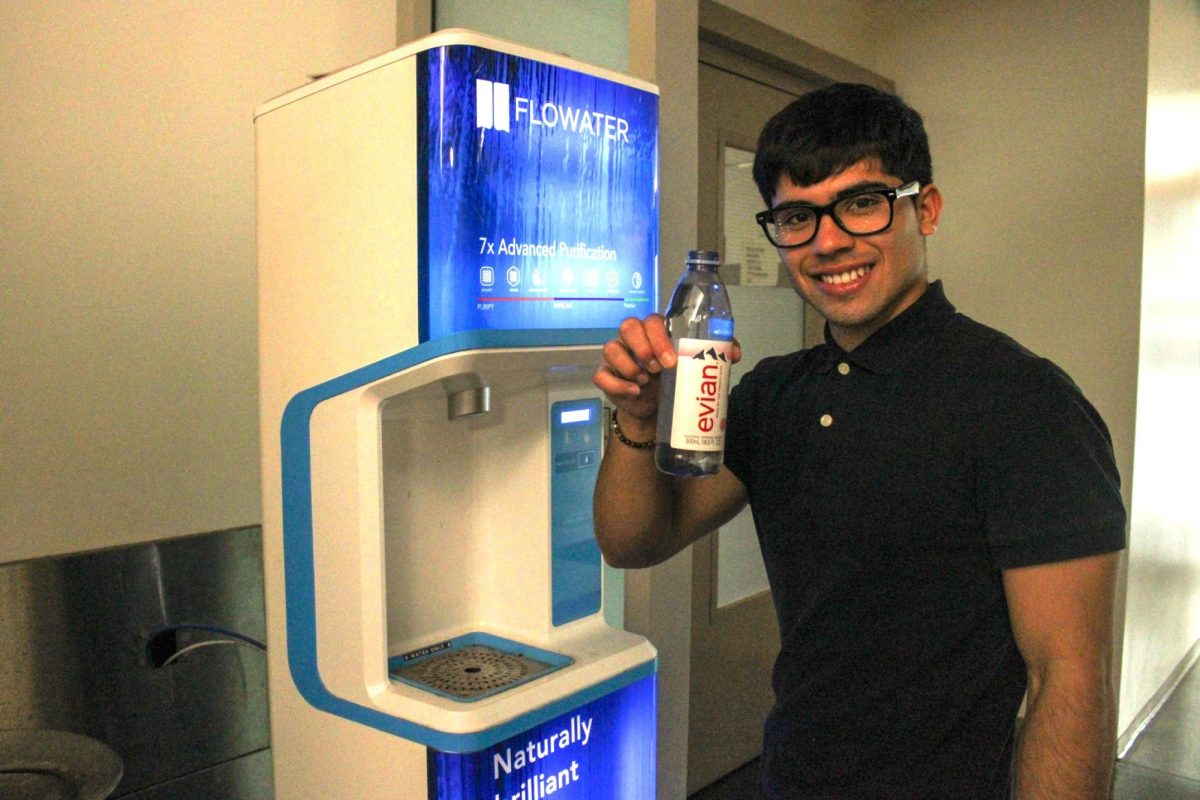Dressed in white lab coats and flowered leis 15 graduates stood on the Campus Theatre stage, Friday for the Radiologic Technology Program completion ceremony.
With a graduating group of 20 or more in past years, the 15 graduates prove that only the strong really do survive Dawn Charman program director said.
“We’re dealing with radiation, patient care and people’s lives and we have to make sure that they are at the right caliber. So not everybody is suited to do this,” Charman said.
The two-year program requires a high school or GED completion with a GPA of C or better, and 13 prerequisite courses with a 2.5 GPA or better including anatomy, English 1A, Math 40 or 43, psychology, and physiology. Upon completing prerequisites, an application into the program must be submitted and there is usually a waiting list, as stated in the EC course catalog.
“Don’t underestimate X-ray. It’s a field of improvement with great avenues, and plays a vital part in the medical field of being the doctor’s eyes,” graduate Omar Salgado, 24, said. Salgado was awarded with the Clinical Excellence Award for having compassion for patients, perfect attendance, and being a team player.
“There is always a future in healthcare. Its computer technology as well as patient care so a lot of people are drawn to the new computer imaging we’re doing,” Charman said.
The campus = is one of few community colleges with the latest radiologic technology including the all digital CR system, instead of using film, the machine reads images with lasers, graduate Lydia Molina, 26, said.
“I’m very proud of them. Each student has their own story of all the trials and tribulations they went through during the program and I commend all of them,” Charman said.
33-year-old graduate, Vandana Remedia, an Indian native, applied for the program anticipating the 2 year wait list. Shortly after having her second child, Remedia was accepted into the program earlier after someone dropped out. With a three-year old as well as a three-month old baby, Remedia says, she never slept.
Salgado said he averaged four hours of sleep a night the last two years of being in the program. Working 40-hour graveyard shifts a week as well as maintaining grades in classes, and attending clinical hours at different hospitals, Salgado says he surprised himself with what he was able to accomplish.
“It’s almost impossible to have a job,” graduate Jophiel Saura, 23, said. During fall and spring semesters, students in the program are required to work 24 hours of clinicals at hospitals a week. During winter and summer sessions, 36 hours a week the first year are required and 40 hours a week are required the second year.
The downside of this particular graduating class is decreased jobs opportunities available. Charman also said that prior classes, have had jobs waiting for them after completing the program, but because of the current economy, several hospitals have hiring freezes and many people aren’t retiring as a result of losing their 401K’s.
“Everybody needs health care and people are living longer, so I just hope for the best for these graduates,” Charman said.
Categories:
Radiologic technology graduates remain optimistic and look forward to the future
By Erika Maldonado
•
October 8, 2009
More to Discover



![Physics and astronomy professor Susan Stolovy presents astronomical news and updates to attendees at the first planetarium show of the semester at El Camino College on Friday, March 28. Prior to becoming a professor at ECC, Stolovy completed her doctorate in physics and worked as an astrophysicist for NASA and the California Institute of Technology on spacecraft missions. "[I'm] still very tuned into what's going on in the world of research as well, and I hope to bring a little bit of my experience into the classroom," Stolovy said. (Nikki Yunker | The Union)](https://eccunion.com/wp-content/uploads/2025/03/planetarium-Made-with-Clipchamp-3-frame-at-0m28s-1200x675.jpg)



